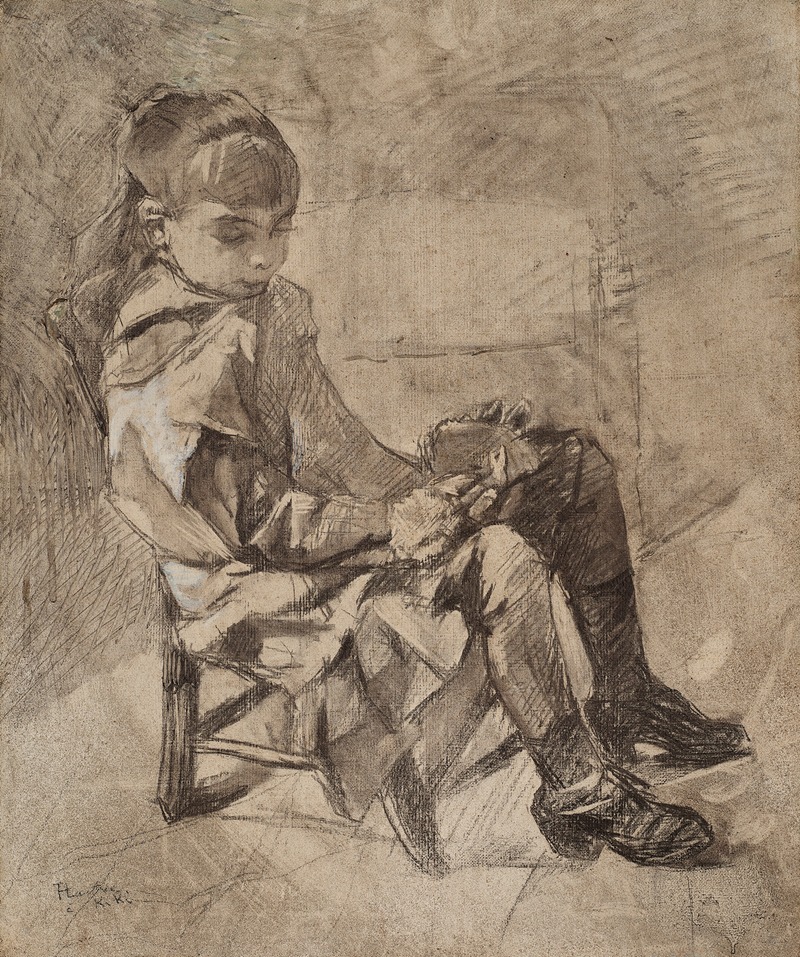
Mademoiselle Béatrix Tapié de Céleyran
A hand-painted replica of Henri de Toulouse-Lautrec’s masterpiece Mademoiselle Béatrix Tapié de Céleyran, meticulously crafted by professional artists to capture the true essence of the original. Each piece is created with museum-quality canvas and rare mineral pigments, carefully painted by experienced artists with delicate brushstrokes and rich, layered colors to perfectly recreate the texture of the original artwork. Unlike machine-printed reproductions, this hand-painted version brings the painting to life, infused with the artist’s emotions and skill in every stroke. Whether for personal collection or home decoration, it instantly elevates the artistic atmosphere of any space.
Henri de Toulouse-Lautrec, a prominent French painter known for his depictions of Parisian nightlife in the late 19th century, created a portrait titled "Mademoiselle Béatrix Tapié de Céleyran." Toulouse-Lautrec was born into an aristocratic family in 1864 and became one of the most influential artists of the Post-Impressionist period. His works are celebrated for their innovative use of color, line, and form, as well as their candid portrayal of the bohemian lifestyle of Montmartre, Paris.
"Mademoiselle Béatrix Tapié de Céleyran" is a portrait that reflects Toulouse-Lautrec's distinctive style, characterized by his ability to capture the essence of his subjects with a few deft strokes. Béatrix Tapié de Céleyran was a relative of Toulouse-Lautrec, which may have afforded him a more intimate understanding of her character and personality, allowing him to portray her with a sense of familiarity and depth.
The painting is noted for its use of bold lines and a limited color palette, typical of Toulouse-Lautrec's work. His technique often involved the use of lithography and poster art, which influenced his approach to painting. In this portrait, the focus is on the subject's expression and posture, capturing a moment of introspection or contemplation. Toulouse-Lautrec's ability to convey emotion and personality through minimalistic yet expressive brushwork is evident in this piece.
Toulouse-Lautrec's work often depicted the vibrant and sometimes decadent world of Parisian cabarets, dance halls, and theaters. However, his portraits of individuals, particularly those within his social circle, reveal a more personal and introspective side of his artistry. "Mademoiselle Béatrix Tapié de Céleyran" is an example of how he could shift from the bustling scenes of public life to the quiet, intimate moments of personal reflection.
The artist's unique perspective was partly shaped by his own life experiences. Toulouse-Lautrec suffered from a genetic disorder that affected his bone growth, resulting in a distinctive physical appearance that set him apart from his peers. This personal struggle may have contributed to his empathetic portrayal of subjects who were often marginalized or overlooked by society.
Toulouse-Lautrec's legacy is marked by his ability to capture the spirit of his time with both sensitivity and a keen eye for detail. His portraits, including "Mademoiselle Béatrix Tapié de Céleyran," continue to be celebrated for their artistic innovation and emotional depth. The painting is a testament to his skill in rendering the complexities of human expression and his contribution to the evolution of modern art.
Today, Toulouse-Lautrec's works are held in high esteem and can be found in major art collections and museums around the world. His influence extends beyond the art world, impacting popular culture and inspiring generations of artists who followed. "Mademoiselle Béatrix Tapié de Céleyran" remains a significant piece within his oeuvre, illustrating his mastery of portraiture and his enduring impact on the art of the late 19th and early 20th centuries.


















